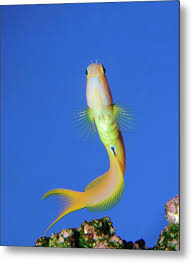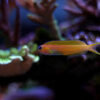Exploring the Relationship Between Dragons and Traditional Customs of China

Dragons, long revered as powerful and mystical creatures in Chinese culture, occupy a central place in the nation’s traditional customs and rituals. From ancient times to modern-day China, the dragon has been a symbol of strength, prosperity, and protection. However, its role in traditional Chinese practices extends far beyond mere symbolism. It influences religious ceremonies, celebrations, art, and even the very structure of Chinese social and political life. This article explores the intricate relationship between dragons and Chinese customs, delving into how this legendary creature intertwines with various aspects of Chinese tradition, such as festivals, rituals, architecture, and national identity.
The Dragon: A Symbol of Imperial Power and Protection
One of the most profound roles that dragons play in Chinese tradition is their association with imperial power. Historically, the dragon was the ultimate symbol of the emperor’s divine right to rule. Emperors were considered to be the “Sons of Heaven,” chosen by celestial forces to govern the people. Dragons, as celestial creatures, were thought to have the power to command natural elements like water, wind, and fire, thereby ensuring prosperity and harmony throughout the land.
In the imperial courts of China, dragons were woven into the very fabric of governance and royalty. The emperor’s throne was known as the “Dragon Throne,” and it was adorned with dragon imagery to signify the ruler’s supreme authority. Imperial robes were embroidered with dragon motifs, with the dragon symbolizing the emperor’s connection to heaven and his role as the protector of the people. These symbols reinforced the belief that the emperor’s power was divinely ordained, and dragons were central to this symbolism.
Additionally, the dragon played a role in the protection of the emperor. In ancient China, the belief that dragons could ward off evil spirits and dangerous forces was widespread. They were thought to guard the palace, the emperor, and the people from any harm, reinforcing the notion that the emperor’s rule was under divine protection.
Dragons and Chinese New Year Celebrations
One of the most widely recognized customs involving dragons is the Chinese New Year, the most significant festival in the Chinese calendar. The New Year celebration is a time to honor ancestors, invite good fortune, and celebrate the beginning of a new cycle of life. Dragons feature prominently in these festivities, symbolizing the drive for prosperity, longevity, and good fortune in the year ahead.
The Dragon Dance, one of the key attractions of the Chinese New Year celebration, is a vivid display of energy and skill. Performers, typically holding poles, manipulate a dragon puppet made of colorful fabric, which undulates and twists in the streets to mimic the movements of a real dragon. This dance is believed to drive away evil spirits and bad luck while ushering in a year of prosperity. The dragon’s movements during the dance are meant to reflect the powerful and graceful qualities of the creature, while the bright colors of the dragon represent vitality and wealth.
Fireworks are another integral part of Chinese New Year celebrations, and they are often believed to be a way to “wake” the dragon. The loud sounds of firecrackers are said to be effective in driving away evil spirits, just as the roar of a dragon would frighten away dark forces. In this sense, the dragon and fireworks share the common goal of ensuring a peaceful and prosperous year ahead.
The Dragon Boat Festival: A Tradition of Strength and Courage
Another key event where dragons play a pivotal role in Chinese customs is the Dragon Boat Festival, which is celebrated on the 5th day of the 5th month in the Chinese lunar calendar. This festival, which honors the poet Qu Yuan, is famous for its dragon boat races, a tradition that celebrates the values of strength, courage, and teamwork.
The dragon boat itself is a long, narrow boat carved to resemble a dragon, often brightly painted and decorated. During the festival, teams of paddlers race these dragon boats in competitive events, mimicking the ancient belief that dragons could bring victory in battle or competition. The boats’ dragon heads are believed to protect the participants during the race, ensuring their safety and success. This celebration emphasizes the idea that the dragon, a creature of power and dignity, offers protection and guidance to those who are courageous enough to confront challenges.
The dragon boat race is a vibrant demonstration of community spirit, where individuals come together to honor tradition, engage in friendly competition, and showcase physical strength. It also aligns with the cultural importance of the dragon as a symbol of national unity and collective identity, bringing communities closer through shared rituals and customs.
Dragons in Feng Shui and Traditional Chinese Medicine
Beyond festivals, the dragon also holds an important place in the traditional practices of Feng Shui and Chinese medicine, two fields that deeply influence Chinese daily life and architecture.
In Feng Shui, the ancient practice of arranging spaces to harmonize with the environment and cosmic forces, the dragon represents an essential force in the balance of energies, or qi (氣). According to Feng Shui beliefs, dragons are powerful protectors that ensure harmony and prosperity within homes and workplaces. They are often depicted in art and sculpture, placed in strategic positions to harness the dragon’s protective energy. Dragons are also thought to guard wealth and bring good fortune, making them a common feature in the decor of businesses or homes that are looking to attract prosperity.
In Chinese medicine, the dragon is not just a mythical creature; it symbolizes the vitality and resilience of the human body. Dragon imagery is often used in the metaphoric language of Chinese medicine, where dragons are associated with the body’s life force and healing energies. Just as dragons have the power to restore balance in nature, Chinese medicine aims to balance the body’s internal energies to promote health and longevity. In this context, the dragon’s role is symbolic of restoration and protection, not only of the land but also of the individual’s well-being.
Dragons in Art and Architecture
Chinese art and architecture are replete with dragon motifs, which are often used to symbolize power, nobility, and protection. In ancient Chinese palaces and temples, dragon carvings can be found on everything from pillars and gates to walls and roofs. These artistic representations of dragons were believed to provide divine protection to the buildings and their occupants. The intricate dragon designs in palaces were also meant to showcase the wealth and power of the emperor, and dragons became synonymous with royal authority.
In traditional Chinese painting, dragons are often depicted soaring through the skies or swimming in the sea, symbolizing freedom and power. These representations serve not only as artistic depictions of the mythical creature but also as representations of good fortune and the emperor’s connection to heaven. Dragons in Chinese art, whether in sculpture, painting, or embroidery, have always carried deep symbolic meaning, representing not just mythical creatures, but also concepts of balance, power, and divine protection.
Dragons in Weddings and Family Traditions
The symbolism of dragons extends to many aspects of Chinese family life, particularly in weddings. In traditional Chinese wedding ceremonies, dragons are used to symbolize the union of the bride and groom, representing fertility, harmony, and the protection of the family. The dragon, along with the phoenix, is often featured in wedding decorations and ceremonial attire. The dragon represents the groom, while the phoenix symbolizes the bride. Together, the pairing of the dragon and phoenix in the wedding ceremony signifies a harmonious marriage and a prosperous future.
In some regions, dragon motifs are also present in family traditions and rites of passage, such as the birth of a child or the celebration of a family ancestor. The dragon is believed to bestow blessings upon children, ensuring their health, wealth, and success. During these rites, dragon imagery is often incorporated into the clothing of the child, the decorations at the ceremony, and even the food offerings.
The Dragon as a Symbol of National Identity
Throughout history, the dragon has also served as a symbol of national identity for the Chinese people. Its powerful presence in Chinese folklore and customs has made it a unifying force, representing the strength, pride, and resilience of the Chinese nation. Whether depicted in national emblems, sports teams, or cultural events, the dragon continues to serve as an enduring symbol of the collective spirit and heritage of the Chinese people.
In modern China, the dragon’s presence in cultural events, political discourse, and artistic expressions has helped reinforce the connection between the past and present, preserving traditional customs while celebrating the country’s rich history and cultural diversity. As a result, the dragon remains a central figure in Chinese society, a reminder of the enduring strength, vitality, and cultural continuity that has characterized the Chinese people for thousands of years.
Conclusion
The dragon’s role in Chinese customs and traditions is vast and multi-faceted. From its association with imperial power and protection to its symbolic presence in festivals, art, architecture, and family life, the dragon has been an enduring and influential figure in Chinese culture. It represents strength, vitality, and protection, and continues to inspire and shape the customs that define Chinese identity today.
The dragon’s presence in Chinese customs is not just a relic of ancient mythology but a living part of the cultural fabric, connecting the past with the present. Whether in religious rituals, national festivals, or personal life events, the dragon remains an integral part of Chinese tradition, offering a timeless symbol of power, prosperity, and protection for generations to come.


